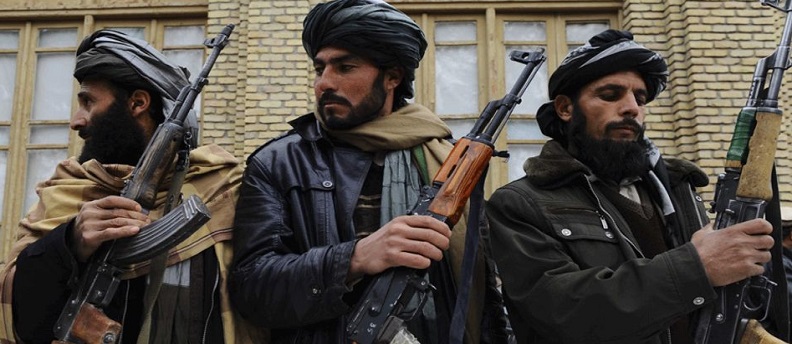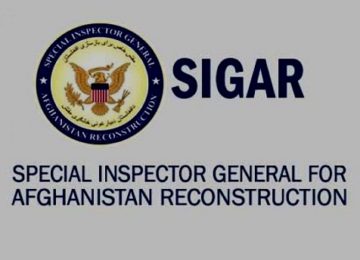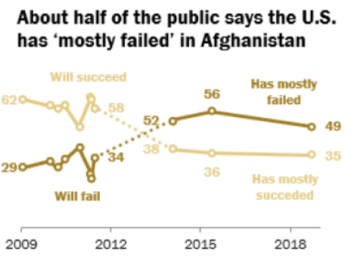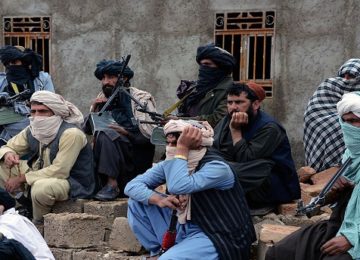The Taleban’s ideology has transformed over the past two decades. While the movement once typified a ‘traditionalist’ Islam – that is, it sought to articulate and defend a particular concept of Islam found in southern Pashtun villages – it is now, in its insurgency phase, closer to forms of political Islam espoused in the Arab world. This does not mean that the Taleban are less conservative or authoritarian, rather that the objects of their repression and the way they frame their mission have shifted in important ways. In a major new report, AAN guest authors Anand Gopal and Alex Strick van Linschoten examine the changes as well as the continuity in the Taleban’s ideology from the 1980s to the present day. The report is the product of years of interviews, fieldwork in Afghanistan, as well as their time working with the Taliban Sources Project archive, a significant collection of documents relating to the Taleban movement.
Outsiders have been trying to understand the Afghan Taleban for over two decades. Most of the members of the movement’s leadership have avoided interviews and public appearances, and the ongoing conflict has made tracking them down for a wider ethnographic study extremely dangerous. Until recently, this left researchers with few options. Over the past seven years, however, an archival project took shape, culminating in the Taliban Sources Project. It has been tremendously challenging to collect, digitise and translate the Taleban’s written output over the years. The authors’ initial motivation was that it would stimulate new research into the movement’s history. As the authors collected more, they thought it was worth trying to examine the ways in which the Taleban’s ideology had changed over time.
The documents and interviews challenge three conventional notions of Taleban ideology:
That the Taleban’s ideology is a mechanical, literalist interpretation of Islam that has not changed in over thirty years.
That the Taleban’s ideology was born in Pakistani refugee camps, and represents a phenomenon alien to Afghan society.
That the Taleban’s ideology represents a form of Deobandism (or, in some variants, Wahhabism) that stands in opposition to Sufism and other religious tendencies prevalent in Afghan society.
The main conclusions drawn in the paper are that the Afghan Taleban’s ideology is a) the result of a sophisticated internal logic that has changed in subtle but important ways over the years, b) the origins of the Taleban’s ideology lie in the southern Pashtun village, not the Pakistani refugee camp, and 3) their thinking is heavily infused with Sufism.
In this seventeenth year of the US-led international military intervention in Afghanistan, a re-thinking of outsiders’ understanding of the Taleban’s beliefs is sorely needed. That the Taleban’s ideology has evolved does not mean that the group is any less oppressive or brutal, but it does mean the nature of their oppression has changed, which may one day provide an opening for engagement. This evolution is partly the result of the exigencies of insurgent warfare, which have exerted different constraints and pressures on the movement than the ones faced when in power, and partly the result of demographics: a new generation has risen within the middle ranks of the movement, some of whom have brought new ideas with them. To grasp what the old generation stands for and how the ground is shifting beneath these core principles, therefore, is to better understand the structures of the movement in general.
In this survey of the Taleban’s written documents and based on years interviewing actors in Afghanistan, the authors found that the movement’s ideology is historically rooted in the world of the pre-1979 (pre-Soviet invasion) Pashtun villages in southern Afghanistan. The village contains various and competing ethical traditions, one of which laid the basis for the future Taleban movement. Key features of Taleban repression, such as restrictions on women or banning music, had their antecedents in the southern Pashtun countryside.
More than half of the Taleban senior leadership – including nearly all the key ideological influencers – were born before 1965, which means that they received their primary education and formative childhood experiences prior to the 1979 upheaval.
The classic theory of the Taleban states that the movement is the product of Pakistani madrassas, but data presented in this report suggests that at least 60 per cent of the 1990s leadership (defined as those who served in ministerial and deputy-ministerial ranks, were front line commanders, or held informal positions among Mullah Omar’s retinue) received a significant portion of their education inside Afghanistan. Moreover, the senior leadership’s core education took place in hujras, informal guestrooms in village mosques, and featured a curriculum that was far more eclectic and irregular than the Deobandi curriculum found in major Afghan and Pakistani madrassas.
Through links to Deobandism and indigenous religious practice, the Taleban leadership, particularly supreme leader Mullah Muhammad Omar, was deeply influenced by Sufism. This has been explored in previous AAN dispatches by Bette Dam and Fabrizio Foschini.
The Taleban’s ideology is based on a particular epistemology, a theory of knowledge, in their case, religious knowledge. In the past, this epistemology was intimately linked to certain rural Pashtun traditions of virtue. A study of the foundations of this epistemology suggest that the group’s beliefs and practices were never simply a mechanical imitation of a literalist reading of texts or a blind attempt to recreate the early days of the Prophet Muhammad, but rather were the result of a sophisticated internal logic deeply tied to notions of honour, virtue and repressive power among Pashtun villagers. (For background, see this 2011 AAN paper about Pashtunwali).
Recently, however, we have seen a shift towards a more ‘modern’ type of Islamist reasoning found in groups ranging from the Muslim Brotherhood to al-Qaeda. Today’s fighters look very different to their predecessors. Gone are the days of enforced asceticism and ritual purity on the frontline—today’s involvement with criminal networks, the opium trade, extortion and kidnapping that mark the current insurgency would have been unthinkable among the self-disciplined taleban fronts of the 1980s (on these taleban fronts in the 1980s’ mujahedin tanzim, before the formation of the Taleban movement, see this 2010 AAN paper) This shift is largely a reflection of the pragmatic concerns of statecraft and, in particular, of running an insurgency.
The key transformation in Taleban ideology has been a shift from an emphasis on outward conduct – the knowledge of rites, bodily comportment, a Prophetic lifestyle, prayer techniques and schedules and other aspects of everyday rituals – to behaviour that today focuses more on internal beliefs and loyalty. The distinction is between act and intent as the objects of Taleban repression. This shift, which is strongest in sections of the leadership, helps explain the movement’s embrace of once-forbidden items such as film and photography. The pragmatic exigencies of waging an insurgency spurred this ideological shift.
To be sure, these shifts and trends differ throughout the movement; they more accurately describe the evolution of the leadership than the rank-and-file, which in some cases may still be espousing traditionalist viewpoints.
Revolutionary Islamism does not necessarily translate as transnational jihad. In fact, what continues to unite all wings of the Afghan Taleban movement is a commitment to Afghanistan’s sovereignty—which is, in effect, a form of nationalism. Despite the Taleban’s rejection of non-Sharia-based normative systems, the movement has not rejected coexistence with those systems in the international state system. Moreover, the Taleban’s imagined community is limited to Afghans in practical terms, if not always in their rhetoric.
Questions of ideology and ideological shift bring a broader perspective into view, one that does not necessarily match every moment of daily life as lived in Afghanistan. When it comes to finding useful strategic insights from these long-term changes, making connections becomes harder still. Nevertheless, this is the place from which we should start: primary sources, interviews and a sense of the Taleban leadership’s position and perspective from talking with them. Only then can we hope to start to untangle the intricacies of how the Taleban has changed over time, and discover who they have become.
The full report can be read here.
By special arrangement with AAN.
Disclaimer: Views expressed in the article are not necessarily supported by Afghan Studies Center.








